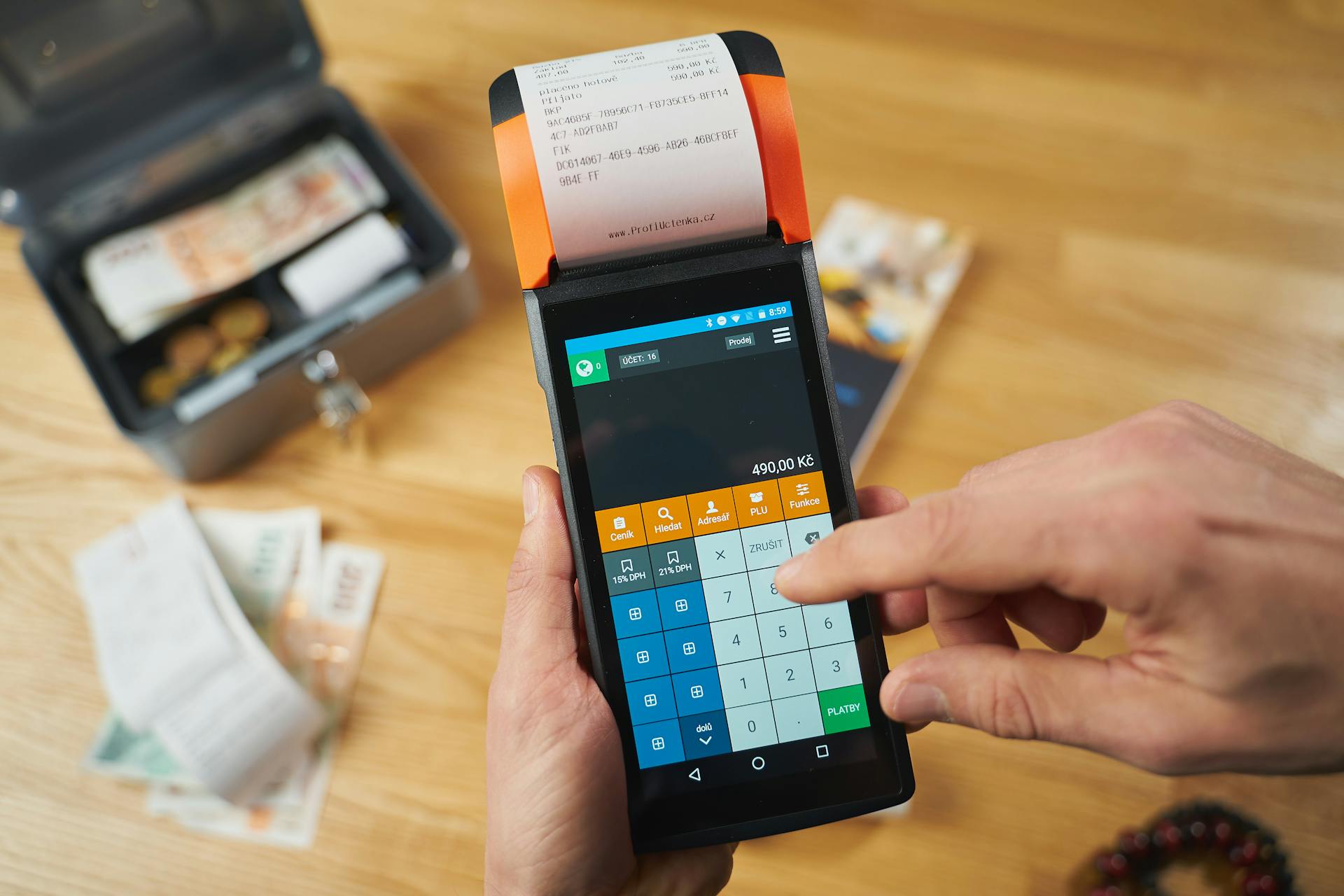
Colonial scrip was a unique form of currency used in early America to facilitate trade and commerce. It was essentially a promise to pay a certain amount of money, often in the form of tobacco, wampum, or other commodities.
In some colonies, like Pennsylvania, scrip was used to pay taxes and debts. This was particularly useful in areas where traditional forms of currency were scarce.
Colonial scrip was often issued by governments, merchants, and other organizations. It was a way to standardize trade and ensure that transactions were fair and transparent.
The value of colonial scrip varied widely depending on the issuer and the location. In some cases, it was accepted as payment for goods and services, while in others it was not.
Impact and Legacy
The Currency Act of 1764 had a lasting impact on the colonies and their relationship with Great Britain. It was considered a major grievance in all colonies except Delaware.
The controversy surrounding the Currency Act contributed to the coming of the American Revolution. It was one of seven acts labeled "subversive of American rights" by the First Continental Congress in 1774.
The currency debate was no longer a live issue in 1774 due to a 1773 amendment to the act. However, its impact was still significant, as it helped convince many colonists that Parliament didn't understand or care about their problems.
Colonial leaders came to believe that they, rather than Parliament, were better suited to legislate for the colonies. This shift in perspective was a crucial step towards the colonies declaring independence.
Related Laws and Acts
The Currency Act 1751 restricted the issue of paper money and the establishment of new public banks by the colonies of New England.
This act was a response to the colonies' issue of paper fiat money, known as "bills of credit", to help pay for military expenses during the French and Indian Wars.
Discover more: Scrip Issue
The act limited the future issue of bills of credit to certain circumstances, including paying public debts, but not private debts.
The Currency Act 1751 was an Act of Parliament passed in 1751, and its long title is "An Act to regulate and restrain Paper Bills of Credit in his Majesty’s Colonies or Plantations of Rhode Island and Providence Plantations, Connecticut, the Massachusets Bay, and New Hampshire in America; and to prevent the same being legal Tenders in Payments of Money."
Here are some key dates related to the Currency Act 1751:
- Royal assent: 25 June 1751
- Repealed: 15 July 1867
- Repealed by: Statute Law Revision Act 1867
Currency Act 1751
The Currency Act 1751 was an Act of Parliament passed in the Parliament of Great Britain. It was enacted on 25 June 1751 and received royal assent on the same day.
The act restricted the issue of paper money and the establishment of new public banks by the colonies of Rhode Island, Providence, Connecticut, Massachusetts, and New Hampshire. It was initially intended to regulate and restrain paper bills of credit in these colonies.
The act limited the future issue of bills of credit to certain circumstances, such as paying public debts. Existing bills of credit were allowed to be used as legal tender for public debts.
The Currency Act 1751 was eventually repealed on 15 July 1867.
The Currency Act 1764
The Currency Act 1764 was a significant piece of legislation that aimed to restrict the colonies' ability to print their own currency. This act effectively took control of the colonies' monetary policy away from them.
The Currency Act prohibited the colonies from issuing paper money, which had been a vital source of funds for them. The British government saw this as a way to exert more control over the colonies.
Colonies like Massachusetts and New York had been issuing their own paper currency to help finance their economies. This practice had been going on for several years before the Currency Act was passed.
The Currency Act also prohibited the colonies from lowering the value of their currency, which had been a common practice. This meant that the colonies had to use the British pound as their standard currency.
The British government wanted to eliminate the colonies' ability to print their own currency because it was seen as a threat to the British economy.
Check this out: Does Vatican City Have Its Own Currency
Colonial Economy
The colonial economy was a struggle from the very beginning, with colonists trying to find a suitable medium of exchange for goods and services.
Colonists employed three main types of currency: commodity money, specie, and paper money, which was issued as a bill of exchange or banknote and mortgaged on the value of the land owned.
The supply of specie decreased each year due to international factors, making it ineffective for day-to-day purchases, and leading to a barter system that proved to be ineffective.
Tobacco was used as a monetary substitute in Virginia as early as 1619, but the quality of the substitutes was inconsistent, with poorer qualities ending up in circulation and finer qualities being exported.
In 1690, Massachusetts became the first colony to issue paper currency, which was employed to finance its share of the debt from King William's War.
Curious to learn more? Check out: Same Day Foreign Currency Exchange
Scheme for Supplying Colonies with Paper Currency
In the early days of colonization, paper currency was a vital tool for facilitating trade and commerce. The British government introduced paper money in the colonies to supplement the shortage of coins.
Colonies like Massachusetts and Pennsylvania were among the first to adopt this system. The paper currency was initially issued as a promise to pay a certain amount of gold or silver.
To ensure the value of paper currency, colonies like Virginia required it to be backed by a certain amount of land or other assets. This practice helped maintain trust in the new currency.
The paper currency was often issued in the form of bills of credit, which were essentially IOUs. These bills were used to finance government spending and pay debts.
The colonies also established their own banks to manage the paper currency and provide loans to merchants and traders. The first bank in the colonies was the Bank of Massachusetts, established in 1784.
The paper currency was not without its challenges, however. Inflation was a major concern, as the increased money supply led to a decrease in its value. The colonies struggled to balance the need for paper currency with the risk of inflation.
To mitigate this risk, some colonies implemented measures like taxation and price controls. These measures helped stabilize the economy but were not always effective.
Readers also liked: Which Colony Was Established as a Business Venture
Notre Dame Researchers Study Pre-Federal Social and Economic Patterns

Researchers at Notre Dame have been studying the pre-federal social and economic patterns of the American colonies.
The colonies had a highly decentralized economy, meaning that decision-making power was spread out among various local governments and institutions.
Colonists relied heavily on self-sufficiency, growing their own food and manufacturing their own goods to meet their needs.
This approach was influenced by the English common law system, which emphasized individual rights and local control.
In New England, for example, the Puritan colonies had a strong emphasis on community and mutual aid, with many residents participating in cooperative farming and trade activities.
This approach was reflected in the colonies' economic policies, which often prioritized local interests over national or regional ones.
The colonies also had a complex system of credit and debt, with merchants and traders often using promissory notes and other financial instruments to conduct business.
This system was influenced by the English mercantile system, which emphasized trade and commerce.
In the Chesapeake region, tobacco became a major cash crop, with many planters relying on indentured servants and slaves to work their plantations.
This had significant social and economic implications, as the demand for labor helped to drive the transatlantic slave trade.
Take a look at this: Centavos in English
Colonies' Economy
The colonies struggled to develop a reliable medium of exchange for goods and services from the very beginning.
Commodity money, using local staples as a means of exchange, was one option, but it had its drawbacks, including inconsistent quality and a tendency for the poorer qualities to end up in circulation.
Tobacco was used as a monetary substitute in Virginia as early as 1619, but this system also had its limitations, as the finer qualities were often exported.
The supply of specie, or gold and silver money, decreased over time due to international factors, making it ineffective for day-to-day purchases.
In 1690, Massachusetts became the first colony to issue paper currency, which was used to finance its share of the debt from King William's War.
However, the paper currency quickly depreciated in value, with Rhode Island bills of exchange being only four percent of face value by 1740.
The money supply was growing at a much faster rate than the overall colonial economy, leading to hyperinflation and a reduction in purchasing power per unit of money.
By 1715, ten of the thirteen colonies had resorted to issuing paper currency, which was often backed by land values rather than specie.
Related reading: What Currency Is Used in Prague Czech Republic
Frequently Asked Questions
How much was a pound worth in colonial America?
In colonial America, one pound was equivalent to 20 shillings. This monetary system was commonly used during the Revolutionary War era.
Sources
- https://founders.archives.gov/documents/Franklin/01-12-02-0024
- https://21stcenturycicero.wordpress.com/fraud/colonial-scrip/
- http://adamfletcherseries.com/the-currency-act-of-1764/
- https://en.wikipedia.org/wiki/Currency_Act
- https://research.nd.edu/news-and-events/news/uncovering-the-history-of-currency-and-counterfeiting-in-colonial-america/
Featured Images: pexels.com

